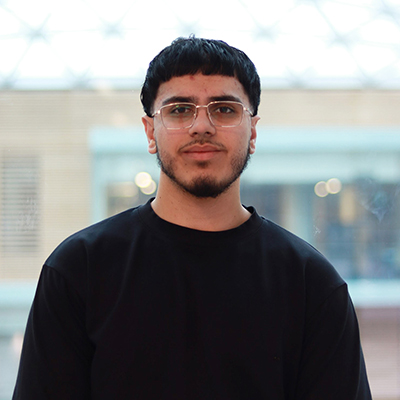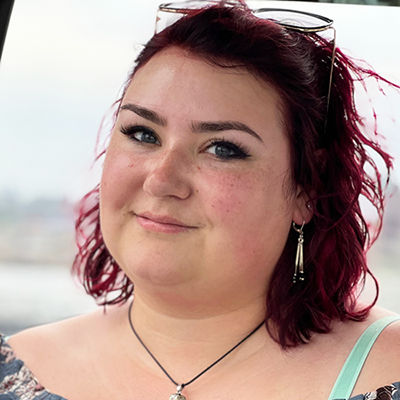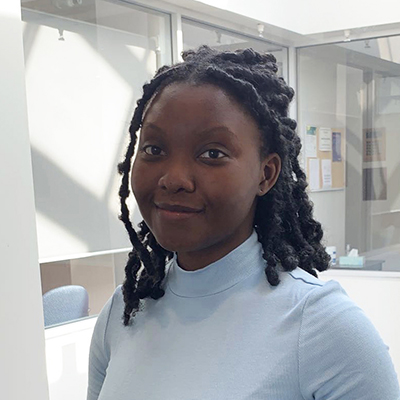We use cookies on this site to enhance your experience.
By selecting “Accept” and continuing to use this website, you consent to the use of cookies.
Search for academic programs, residence, tours and events and more.
Oct. 14, 2025
Print | PDFExperiential learning at Wilfrid Laurier University’s Brantford campus isn’t just preparing students for their futures — it’s shaping the community.
The Workforce Planning Board of Grand Erie recently launched its Business Resource Toolkit, an online directory designed to help local entrepreneurs and small business owners access the supports they need to survive and grow. The toolkit brings together information on everything from human resources and health and safety to legal supports and Indigenous business services.
According to Workforce Planning Board of Grand Erie executive director Danette Dalton, the idea was sparked by conversations with business owners who often struggled to find the right guidance at the right time.
“Some people start their businesses without really any plan or understanding of what’s needed to stay alive and thrive,” says Dalton. “We wanted to create a catalogue of resources that would not only support new businesses but also give established ones more visibility and brand awareness in the community.”
To help bring the project to life, Dalton turned to Laurier Brantford, building on a long history of partnerships with the university. The Business Resource Toolkit became the focus of a second-year User Experience (UX) Design course, where students were challenged to design a user-friendly prototype. From there, the Workforce Planning Board was able to hire three students to implement the model, drawing on funding provided by the Ontario Ministry of Agriculture, Food and Rural Affairs. A number of students in other programs, from Human Rights and Human Diversity to Economics, followed different paths to join the project, putting their diverse skill sets to work compiling data that would populate the new directory.
For Dalton, the students’ involvement was a game-changer.
“I don’t think anything can be done unless you have different voices at the table,” she says. “It takes a village not just to raise a child, but to get projects off the ground. Fresh eyes, energy and their understanding of technology really energized our team and pushed the project forward.”
The students benefited in turn, gaining both technical and professional skills. From learning to meet real-world deadlines to strengthening communication and teamwork, the experience helped prepare them for future careers.
“I don't think anything can be done unless you have different voices at the table. It takes a village not just to raise a child, but to get projects off the ground.”
— Danette Dalton, executive director, Workforce Planning Board of Grand Erie
“Our community is very lucky to have the resources of Laurier,” says Dalton. “Local businesses should take the time to reach out to Laurier’s Community and Workplace Partnerships team to find out how they can benefit because, yes, students can support their goals — but it also ensures that our future workforce is ready and able.”
Below are the stories of three Laurier students — each from different academic backgrounds — who played a pivotal role in shaping the Workforce Planning Board of Grand Erie’s Business Resource Toolkit.

Fourth-year User Experience Design (UXD) student
Connected with Workforce Planning Board of Grand Erie through: UX200 coursework
You tackled the Workforce Planning Board project that would eventually take the form of the Business Resource Toolkit as a capstone assignment for UX200, but your involvement didn’t end in the classroom.
FS: That’s right — I was hired by the Workforce Planning Board along with two of my UX200 teammates, Alex Capolongo and Joshua Yang, to execute the model we’d developed. It was a great opportunity to make some money over the summer and to help the community out by implementing the ideas we’d proposed in class.
What makes for good UX and how did you apply those principles in the toolkit?
FS: UX design involves communicating with a product’s intended audience — in this case, local small business owners — to find out what they want from the toolkit and how they’ll actually use it. We engaged them in card sorting exercises to help us categorize the information in the directory and A/B testing of mock-up websites. This was the first time we’d actually gone out to businesses and tested a product. Usually in class you’re testing your models on students who are already familiar with technology and test methodology — so it was a fantastic opportunity to gain real-world experience and to apply the UX research tools that we learned in our classes.
How did the paid work experience differ from the in-class component?
FS: The best thing about it was that we were treated like actual working professionals. As students, we were given a hefty bit of responsibility and had real deadlines that we were expected to meet. Danette is a great boss and I’m grateful she gave us this opportunity. It prepared us for our future careers and inspired me to join another non-profit organization, The Citizen’s Foundation Canada, which supports education for underprivileged children.

Fourth-year Human Rights and Human Diversity student
Connected with Workforce Planning Board of Grand Erie through: Youth Leaders on Board
What is Youth Leaders on Board?
IH: Youth Leaders on Board is an amazing program that gives undergraduate students the chance to sit on the boards of non-profit organizations in the Brantford-Brant region, while earning co-curricular credit. I was paired with the Workforce Planning Board of Grand Erie as a non-voting board member and got to see how they run their organization and participate in their programming, including Manufacturing Day tours, which take high school students to local manufacturing companies to explore careers in the industry.
How did you get involved in the Business Resource Toolkit?
IH: While on the Workforce Planning Board of Grand Erie board, I was pursuing a graduate certificate in Human Resources through Laurier’s partnership program with Conestoga College. As a final project for the certificate, we were tasked to serve as HR change management consultants for an actual employer. I proposed this to Danette and she saw the Business Resource Toolkit project as the perfect fit for the assignment. My team was responsible for doing the back-end research, compiling spreadsheets of Grand Erie region businesses that should be included in the directory, and ensuring they were listed in the proper categories.
What did you get out of the experience?
IH: A lot of small businesses don’t have HR departments. They don’t have the time, the staff, or the capacity to be experts on strategic recruitment, employment law, or even health and safety. A tool that makes all of those external resources easy for small business owners to find could be a huge benefit for them and I was proud to have contributed to its launch.
It was also really interesting to see how data gets integrated into a tool like this. I’m not tech-savvy, so it was great to collaborate with the UX200 students as they developed ways of packaging the data that would be user-friendly and then adapting our research approach to work with their design models.
What's next for you?
IH: I’ve been hired on full-time at the Workforce Planning Board of Grand Erie as a project assistant, focusing on the Skills2Advance program, which trains people for careers in high-demand trades. It’s a really fun program and it’s very rewarding working with student clients. I’m also continuing my studies at Laurier Brantford and look forward to graduating in spring 2026.

Master of Business Economics (MABE ’25) and Economics (BA ’23) alum
Connected with Workforce Planning Board of Grand Erie through: Research assistant job posting
How did you, as a graduate student at Laurier’s Waterloo campus, get involved with the Workforce Planning Board of Grand Erie?
ZSW: My involvement was thanks to Master of Business Economics program director Christos Shiamptanis. He shared a research assistant posting at the Workforce Planning Board with all Master of Business Economics grad students, knowing it would provide excellent experience in the field of economics. I happened to be the lucky person chosen for the role.
What did your research entail?
ZSW: The research focused on internationally trained workers in the Grand Erie region. I supported the Workforce Planning Board with literature reviews and conducted focus groups and individual interviews with employers to get their perspectives on what they look for when hiring internationally trained workers and how they can better support them. I’d done literature reviews while working as a research assistant at Laurier, but these experiences in the field — the focus groups and interviews — were new challenges for me. I was grateful to get that experience and to fill in that gap in my resume.
Your research wasn’t specifically intended for the Business Resource Toolkit?
ZSW: Not initially, but the Workforce Planning Board realized it was a perfect fit, so we condensed it to populate an entire section of the toolkit devoted to internationally trained workforce resources. It’s great to see the research immediately being put to good use and to know that it will continue to be a benefit to local employers long after my research project is complete.
“Our community is very lucky to have the resources of Laurier.”
— Danette Dalton
Laurier Brantford’s Community and Workplace Partnerships team is currently recruiting experiential learning opportunities for more than 20 Community Service-Learning and practicum courses offered throughout the academic year. These partnerships reflect Laurier’s ongoing commitment to meaningful community engagement — supporting local organizations in meeting their goals while giving students the chance to gain experience, reflect on their contributions and apply what they learn in the classroom. Organizations interested in hiring a student part-time or hosting a student placement are encouraged to reach out to cwpartnerships@wlu.ca.